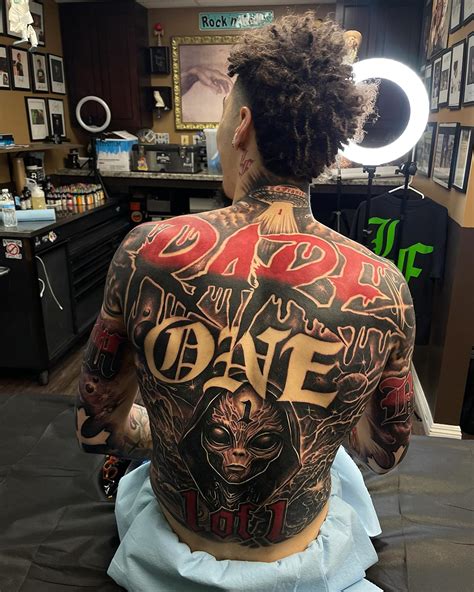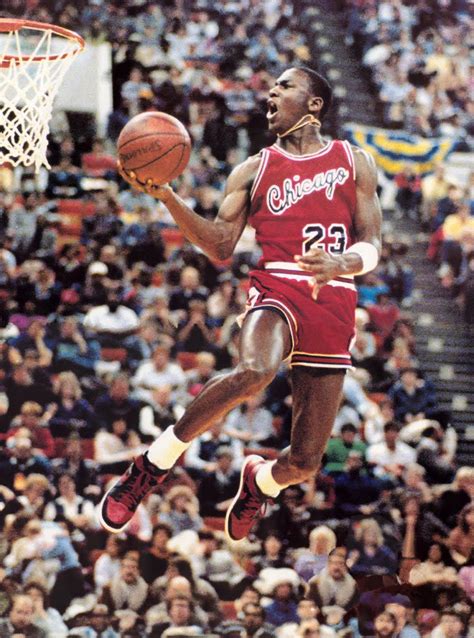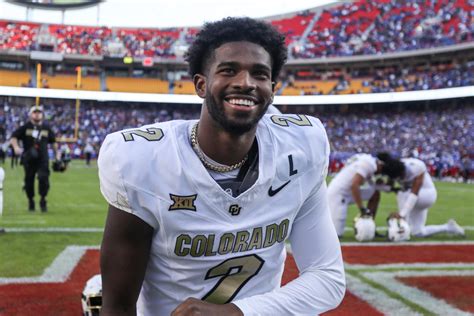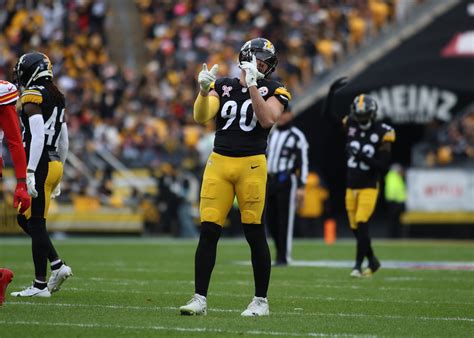
LaMelo Ball’s recently unveiled tattoos have ignited a firestorm of criticism online, with many fans labeling the Charlotte Hornets point guard’s new body art as “disgusting” and “awful.” The controversial ink, sprawling across his chest and stomach, features a collection of designs that have sparked widespread disapproval on social media platforms.
The negative reaction stems from the unusual and, to some, unappealing nature of the tattoos. “Sh*t looks disgusting,” one user commented on social media, encapsulating the sentiments of a significant portion of the online basketball community, as reported by various media outlets observing the online backlash. While tattoos are a common form of self-expression among NBA players, Ball’s latest additions have clearly missed the mark with a considerable segment of his fanbase. The specific designs and their placement appear to be the primary drivers of the criticism. The incident highlights the often-intense scrutiny athletes face regarding their personal choices, particularly those that are highly visible and subject to public opinion. The backlash serves as a reminder of the power of social media in shaping perceptions and influencing the narrative surrounding public figures.
The uproar began shortly after photos and videos of Ball’s new tattoos surfaced online. Fans were quick to express their dismay, flooding platforms like X (formerly Twitter), Instagram, and Reddit with negative comments. The designs, which cover a significant portion of his torso, have been described as “random,” “ugly,” and “poorly executed.” Some critics have even questioned Ball’s judgment, suggesting that the tattoos detract from his image and professionalism.
“I don’t know what he was thinking,” one fan wrote on Reddit. “Those tattoos are a disaster.” Another user commented, “He needs to fire his tattoo artist ASAP.” The intensity of the criticism underscores the strong emotional connection fans have with their favorite athletes and their willingness to voice their opinions, even on matters of personal taste.
The controversy also raises questions about the role of social media in shaping public perception. In an era where athletes are constantly under the microscope, every decision they make, both on and off the court, is subject to intense scrutiny. The instant feedback provided by social media platforms can amplify both positive and negative reactions, creating a volatile environment for public figures. While some athletes choose to ignore the criticism, others find it difficult to tune out the noise. The impact of social media on athletes’ mental health is a growing concern, and the LaMelo Ball tattoo controversy serves as a stark reminder of the challenges they face in navigating the digital landscape.
It is important to note that not all reactions to Ball’s tattoos have been negative. Some fans have defended his right to express himself through body art, arguing that personal taste is subjective and that he should not be judged for his choices. “It’s his body, his choice,” one supporter wrote on Twitter. “If he likes the tattoos, that’s all that matters.” However, these voices appear to be in the minority, as the overwhelming sentiment online remains critical.
The incident also highlights the evolving role of tattoos in professional sports. Once considered taboo, tattoos have become increasingly common among athletes across various disciplines. Many athletes use tattoos to express their personality, commemorate important events, or pay tribute to loved ones. However, the acceptance of tattoos is not universal, and some individuals still hold negative perceptions about body art. The LaMelo Ball controversy demonstrates that even in a more tolerant society, tattoos can still be a source of controversy and criticism.
The designs of the tattoos themselves seem to be a point of contention. Unlike some athletes who opt for cohesive, meaningful designs, Ball’s tattoos appear to be a collection of disparate images. This lack of cohesion may contribute to the perception that the tattoos are “random” or “poorly planned.” Details regarding the tattoo designs themselves remain somewhat vague based on publicly available information and images. The lack of specific information further fuels speculation and subjective interpretations.
The controversy surrounding LaMelo Ball’s tattoos serves as a case study in the intersection of sports, social media, and personal expression. It highlights the challenges athletes face in navigating the digital landscape and the importance of understanding the potential consequences of their choices. While Ball has yet to publicly address the criticism, it remains to be seen how he will respond to the ongoing controversy.
Background on LaMelo Ball
LaMelo Ball is an American professional basketball player for the Charlotte Hornets of the National Basketball Association (NBA). He was born on August 22, 2001, making him one of the younger players in the league. Ball gained significant attention even before entering the NBA due to his unique path to professional basketball.
-
Early Career and Family: LaMelo is the youngest of three brothers, all of whom have pursued professional basketball careers. His older brothers are Lonzo Ball, who plays for the Chicago Bulls, and LiAngelo Ball. Their father, LaVar Ball, is a controversial figure known for his outspoken personality and promotion of his sons’ basketball careers through his Big Baller Brand. LaMelo’s early career was heavily influenced by his father’s involvement and unconventional approach to player development.
-
Lithuanian and Australian Stints: Instead of following the traditional route of playing high school basketball in the United States, LaMelo played professionally overseas at a young age. He had a brief stint in Lithuania with Prienai–Birštonas of the Lithuanian Basketball League (LKL) in 2018. He later played in the Junior Basketball Association (JBA), a league founded by his father. He also played for the Illawarra Hawks of the Australian National Basketball League (NBL) in 2019, where he showcased his talent and gained valuable experience against professional competition.
-
NBA Draft and Hornets Career: LaMelo Ball was drafted third overall by the Charlotte Hornets in the 2020 NBA draft. His arrival in Charlotte generated significant excitement and anticipation. He quickly made an impact on the court, showcasing his exceptional passing skills, court vision, and scoring ability.
-
Rookie of the Year: In his rookie season, Ball was named the NBA Rookie of the Year, solidifying his status as one of the league’s most promising young stars. He averaged 15.7 points, 5.9 rebounds, and 6.1 assists per game, demonstrating his all-around game and potential to become a franchise player.
-
All-Star Selection: Ball’s continued development led to his first NBA All-Star selection in 2022. He has become a key player for the Hornets, known for his exciting playing style and ability to create opportunities for his teammates.
-
Playing Style: LaMelo Ball is known for his exceptional court vision, passing ability, and ball-handling skills. He is a creative playmaker who can find open teammates with pinpoint passes. He is also a capable scorer, with a smooth jump shot and the ability to attack the basket.
-
Off-Court Persona: LaMelo Ball is known for his laid-back and confident personality. He has a significant social media presence and is popular among young fans. However, like many high-profile athletes, he faces scrutiny and criticism, as evidenced by the recent controversy over his tattoos.
-
Big Baller Brand: LaMelo, along with his brothers, has been associated with the Big Baller Brand, a sports apparel company founded by his father. The brand has been a source of controversy and attention, contributing to the family’s high profile.
Deeper Dive into Tattoo Culture in the NBA
Tattoos have become increasingly prevalent in the NBA, transforming from a fringe practice to a mainstream form of self-expression. Today, it’s more unusual to find an NBA player without tattoos than one adorned with them. This shift reflects broader societal trends, where tattoos have gained greater acceptance and are viewed as a personal art form.
-
Historical Context: In the early days of the NBA, tattoos were less common and often associated with rebellious or counter-cultural figures. However, as the league grew in popularity and became more diverse, attitudes towards tattoos began to change. Players like Dennis Rodman, known for his flamboyant style and extensive body art, helped to normalize tattoos in the NBA.
-
Motivations and Meanings: NBA players get tattoos for a variety of reasons. Some use them to express their personality, beliefs, or values. Others get tattoos to commemorate important events, such as winning a championship or honoring a loved one. Many players also get tattoos for purely aesthetic reasons, viewing them as a form of personal art.
-
Common Themes: While the specific designs vary widely, certain themes are common among NBA players’ tattoos. These include:
- Religious Symbols: Many players get tattoos of religious symbols, such as crosses, praying hands, or biblical verses, to express their faith.
- Family Tributes: Tattoos of family members, such as portraits of parents or children, are also popular. These tattoos serve as a way to honor and remember loved ones.
- Motivational Quotes: Some players get tattoos of motivational quotes or phrases to inspire themselves and others. These quotes often reflect their personal philosophy or goals.
- Symbols of Strength and Resilience: Tattoos of animals, such as lions, tigers, or eagles, are often used to symbolize strength, courage, and resilience.
- Cultural Heritage: Players may get tattoos that reflect their cultural heritage, such as tribal designs or national symbols.
-
Notable Examples: Several NBA players are known for their extensive and meaningful tattoos.
- LeBron James: James has a wide array of tattoos, including tributes to his family, his hometown of Akron, Ohio, and his accomplishments on the court.
- Kevin Durant: Durant has numerous tattoos, including a large portrait of Tupac Shakur on his leg and various religious symbols.
- Stephen Curry: Curry has several tattoos, including a Hebrew verse on his wrist that reflects his faith.
-
Potential Controversies: While tattoos are generally accepted in the NBA, they can sometimes lead to controversy. For example, players with tattoos that are deemed offensive or inappropriate may be asked to cover them up. In some cases, tattoos have even led to fines or suspensions. The LaMelo Ball situation is a prime example of how personal expression, while generally accepted, can still draw significant negative attention.
-
Evolution of Tattoo Styles: Tattoo styles and techniques have evolved significantly over the years. Modern tattoo artists are capable of creating incredibly detailed and realistic designs. This has led to a greater emphasis on artistry and creativity in NBA players’ tattoos.
-
Impact on Endorsements and Public Image: While most NBA teams and sponsors have become accepting of tattoos, there’s still a possibility that certain designs or placements could affect endorsement deals or a player’s overall public image. Players often consider this when choosing what and where to ink their bodies.
The prevalence of tattoos in the NBA reflects broader cultural shifts and the increasing acceptance of personal expression. While controversies like the one surrounding LaMelo Ball’s tattoos can arise, the overall trend is towards greater tolerance and appreciation for body art as a form of individual identity.
Social Media’s Role in Shaping Athlete Perception
Social media has fundamentally altered the relationship between athletes and the public. It has provided athletes with a direct platform to communicate with fans, build their personal brands, and control their narratives. However, it has also created new challenges, including increased scrutiny, the potential for online harassment, and the pressure to maintain a perfect image.
-
Direct Communication: Social media platforms like X, Instagram, and Facebook allow athletes to bypass traditional media outlets and communicate directly with their fans. This direct communication can foster a sense of connection and loyalty. Athletes can use social media to share their thoughts, opinions, and personal experiences, giving fans a glimpse into their lives beyond the playing field.
-
Brand Building: Social media has become an essential tool for athletes to build their personal brands. By creating engaging content and cultivating a strong online presence, athletes can attract endorsements, sponsorships, and other business opportunities. A strong social media presence can also increase an athlete’s visibility and popularity, making them more marketable to potential partners.
-
Narrative Control: Social media allows athletes to control their own narratives and respond to media coverage. They can use social media to correct misinformation, defend themselves against criticism, and share their perspectives on important issues. This ability to control the narrative can be particularly valuable in times of controversy or crisis.
-
Increased Scrutiny: While social media offers many benefits, it also comes with increased scrutiny. Athletes are constantly under the microscope, and every post, comment, and like is subject to public interpretation. This constant scrutiny can be overwhelming and lead to anxiety and stress.
-
Online Harassment: Social media can also be a breeding ground for online harassment and abuse. Athletes are often targeted by trolls and haters who use social media to spread negativity and hate. This harassment can have a significant impact on athletes’ mental health and well-being.
-
Pressure to Maintain a Perfect Image: Social media can create pressure for athletes to maintain a perfect image. They may feel compelled to portray themselves as flawless individuals, even when they are struggling with personal or professional challenges. This pressure can lead to feelings of inadequacy and self-doubt.
-
Impact on Mental Health: The constant scrutiny, online harassment, and pressure to maintain a perfect image can take a toll on athletes’ mental health. Studies have shown that athletes who are active on social media are more likely to experience anxiety, depression, and other mental health issues.
-
Strategies for Managing Social Media: To mitigate the negative effects of social media, athletes can employ several strategies. These include:
- Setting Boundaries: Athletes can set boundaries around their social media use, limiting the amount of time they spend online and avoiding engagement with negative or hateful content.
- Filtering Comments: Athletes can use social media filters to block offensive or inappropriate comments.
- Seeking Support: Athletes can seek support from friends, family, or mental health professionals to help them cope with the challenges of social media.
- Focusing on Positivity: Athletes can focus on sharing positive and uplifting content and engaging with fans who offer support and encouragement.
- Delegating Management: Athletes can delegate the management of their social media accounts to professionals who can help them create engaging content and protect their online reputation.
The LaMelo Ball tattoo controversy illustrates the power of social media to amplify both positive and negative opinions. It highlights the challenges athletes face in navigating the digital landscape and the importance of developing strategies for managing their social media presence. The ability to handle social media scrutiny effectively can be a crucial component of an athlete’s overall success and well-being.
Ethical Considerations in Reporting on Athletes’ Personal Choices
Reporting on athletes’ personal choices, such as their tattoos, raises several ethical considerations for journalists and media outlets. Balancing the public’s interest with the athlete’s right to privacy and avoiding sensationalism are crucial aspects of responsible reporting.
-
Public Interest vs. Privacy: Journalists must consider whether the information they are reporting is truly in the public interest or simply catering to voyeuristic curiosity. While athletes are public figures, they still have a right to privacy regarding their personal lives and choices. Reporting on personal matters should be justified by a legitimate public interest, such as revealing information that affects the athlete’s performance, character, or role as a public figure.
-
Avoiding Sensationalism: Media outlets should avoid sensationalizing personal choices, such as tattoos, to generate clicks or increase viewership. Sensationalism can involve exaggerating the significance of the information, using inflammatory language, or focusing on trivial details. Responsible reporting focuses on providing accurate and contextualized information without resorting to hype or exaggeration.
-
Respect for Personal Expression: Journalists should respect athletes’ right to express themselves through personal choices, such as tattoos or hairstyles. Unless these choices are directly relevant to the athlete’s professional performance or raise legitimate ethical concerns, they should be treated with respect and sensitivity.
-
Accuracy and Context: It is essential to ensure that all information reported is accurate and presented in context. This includes verifying facts, providing background information, and avoiding speculation or conjecture. Misrepresenting or distorting information can damage an athlete’s reputation and erode public trust in the media.
-
Fairness and Objectivity: Journalists should strive for fairness and objectivity in their reporting, presenting all sides of the story and avoiding bias. This includes giving athletes the opportunity to respond to criticism or allegations and presenting their perspective fairly.
-
Impact on Mental Health: Media outlets should be mindful of the potential impact of their reporting on athletes’ mental health. Negative or critical coverage can contribute to anxiety, depression, and other mental health issues. Responsible reporting avoids unnecessary personal attacks and focuses on providing constructive criticism.
-
Use of Social Media: When reporting on social media activity, journalists should exercise caution and avoid taking comments or posts out of context. Social media can be a valuable source of information, but it can also be easily manipulated or misinterpreted. Responsible reporting verifies the authenticity of social media content and provides appropriate context.
-
Balancing Criticism and Support: Reporting should strike a balance between criticism and support, acknowledging both the positive and negative aspects of an athlete’s performance or behavior. Unrelenting criticism can be demoralizing and counterproductive, while excessive praise can be perceived as insincere or biased.
The LaMelo Ball tattoo controversy highlights the ethical challenges of reporting on athletes’ personal choices. Journalists must navigate the fine line between informing the public and respecting the athlete’s right to privacy and personal expression. Responsible reporting prioritizes accuracy, fairness, and sensitivity, avoiding sensationalism and minimizing the potential for harm.
Potential Impact on LaMelo Ball’s Brand and Career
The negative reaction to LaMelo Ball’s tattoos could potentially have several impacts on his brand and career, ranging from minor image adjustments to more significant financial implications. While the long-term effects are uncertain, it’s important to consider the potential ramifications.
-
Public Perception: The most immediate impact is on public perception. If a significant portion of fans find the tattoos unappealing, it could affect their overall opinion of Ball as a player and a public figure. This is particularly crucial for a player who relies heavily on his charisma and marketability.
-
Endorsement Deals: Endorsement deals are highly sensitive to public image. Companies want to associate themselves with athletes who are well-liked and respected. If the negative perception of Ball’s tattoos persists, it could potentially impact his existing endorsement deals or make it more difficult to secure new ones. Companies might hesitate to partner with an athlete who is perceived as controversial or whose image clashes with their brand values.
-
Merchandise Sales: An athlete’s popularity directly translates to merchandise sales, including jerseys, apparel, and other branded products. A dip in popularity due to the tattoo controversy could lead to decreased sales, affecting Ball’s revenue and the revenue of the Charlotte Hornets.
-
Social Media Engagement: Social media engagement is a key indicator of an athlete’s influence and popularity. If fans are turned off by Ball’s tattoos, it could lead to a decline in his social media following, likes, comments, and shares. This, in turn, could impact his ability to connect with fans and promote his brand.
-
On-Court Performance: While less direct, the negative attention could potentially affect Ball’s on-court performance. Distractions and stress can impact an athlete’s focus and concentration. However, it’s also possible that Ball could use the criticism as motivation to prove his detractors wrong.
-
Team Dynamics: The Charlotte Hornets’ organization might have concerns about the impact of the controversy on the team’s image and reputation. While unlikely to result in any direct action against Ball, the team might offer guidance on managing his public image.
-
Long-Term Career: In the long term, the tattoo controversy is unlikely to have a significant impact on Ball’s career trajectory, provided he continues to perform well on the court. However, it serves as a reminder of the importance of managing one’s public image and the potential consequences of personal choices.
-
Damage Control Strategies: Ball and his management team can employ several strategies to mitigate the potential negative impacts of the tattoo controversy. These include:
- Addressing the Criticism: Ball could publicly address the criticism and explain the meaning or motivation behind his tattoos.
- Highlighting Positive Contributions: Focusing on his positive contributions to the community and his charitable work can help to offset the negative attention.
- Maintaining Strong On-Court Performance: Continuing to excel on the court is the best way to silence the critics and solidify his status as a star player.
- Working with a Public Relations Team: A skilled public relations team can help to manage his image and communicate effectively with the media and the public.
The impact of the LaMelo Ball tattoo controversy on his brand and career remains to be seen. However, by proactively managing his public image and continuing to perform at a high level, he can minimize the potential negative consequences and maintain his status as one of the NBA’s brightest young stars.
FAQ
1. What exactly are LaMelo Ball’s new tattoos, and where are they located?
While details regarding the specific designs remain somewhat vague based on publicly available information and images, the tattoos are located on LaMelo Ball’s chest and stomach area. Reports indicate they are a collection of disparate images rather than a cohesive design, which has contributed to the negative reactions.
2. Why are fans criticizing LaMelo Ball’s new tattoos so harshly?
The criticism primarily stems from the perceived aesthetic quality and design choices. Many fans have described the tattoos as “disgusting,” “awful,” and “poorly executed.” The lack of a clear theme or cohesive design also appears to be a factor in the negative reactions.
3. Has LaMelo Ball responded to the criticism of his tattoos?
As of the latest reports, LaMelo Ball has not publicly addressed the criticism of his new tattoos. It remains to be seen whether he will respond in the future.
4. Could this tattoo controversy affect LaMelo Ball’s endorsement deals or career?
It’s possible. While the long-term impact is uncertain, negative public perception could potentially affect endorsement deals and merchandise sales. Companies might hesitate to partner with an athlete whose image is perceived as controversial. However, strong on-court performance and effective public relations management can mitigate these potential negative consequences.
5. Is there any support for LaMelo Ball’s decision to get the tattoos?
Yes, some fans have defended LaMelo Ball’s right to express himself through body art, arguing that personal taste is subjective and that he should not be judged for his choices. However, these voices appear to be in the minority compared to the widespread criticism.









